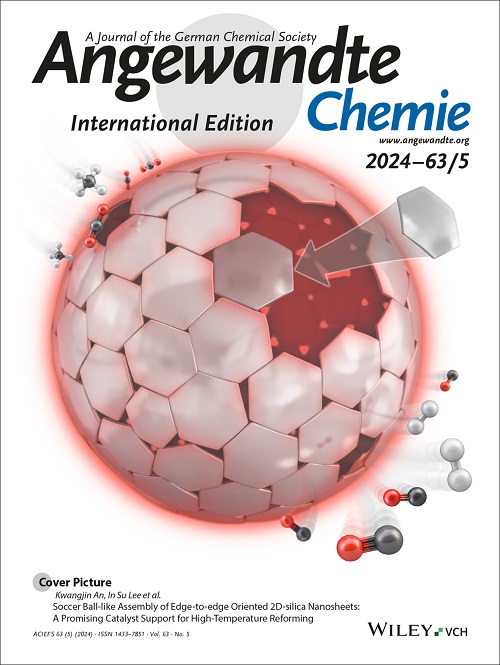Nanoconfinement-induced Electrochemical Ion-Solvent Cointercalation in Pillared Titanate Host Materials
IF 16.1
1区 化学
Q1 CHEMISTRY, MULTIDISCIPLINARY
引用次数: 0
Abstract
Electrochemical ion-solvent cointercalation reactions are an avenue to reach improved kinetics compared to the corresponding intercalation of desolvated ions. Here, we demonstrate the impact of different structural pillar molecules on the electrochemical Li+ intercalation mechanism in expanded hydrogen titanate (HTO) electrode materials. We show that interlayer-expansion of HTO with organic pillars can enable cointercalation reactions. Their electrochemical reversibility is drastically improved when non-cross-linking pillars are employed that expand and separate the host material’s individual layers, underlining the impact of the electrochemo-mechanics of the nanoconfined interlayer space. This pillared HTO structure results in an increased Li+ storage capacity and reversibility compared to pristine HTO. We derive structural models of the pillared HTO host materials based on combined experiments and theoretical calculations, and employ electrochemical operando experiments to unambiguously demonstrate the nanoconfinement-induced cointercalation mechanism in pillared HTO electrode materials. The work demonstrates the potential of nanoconfined pillar molecules to modify host materials and enable highly reversible cointercalation reactions with improved capacity and kinetics.求助全文
约1分钟内获得全文
求助全文
来源期刊
CiteScore
26.60
自引率
6.60%
发文量
3549
审稿时长
1.5 months
期刊介绍:
Angewandte Chemie, a journal of the German Chemical Society (GDCh), maintains a leading position among scholarly journals in general chemistry with an impressive Impact Factor of 16.6 (2022 Journal Citation Reports, Clarivate, 2023). Published weekly in a reader-friendly format, it features new articles almost every day. Established in 1887, Angewandte Chemie is a prominent chemistry journal, offering a dynamic blend of Review-type articles, Highlights, Communications, and Research Articles on a weekly basis, making it unique in the field.

 求助内容:
求助内容: 应助结果提醒方式:
应助结果提醒方式:


